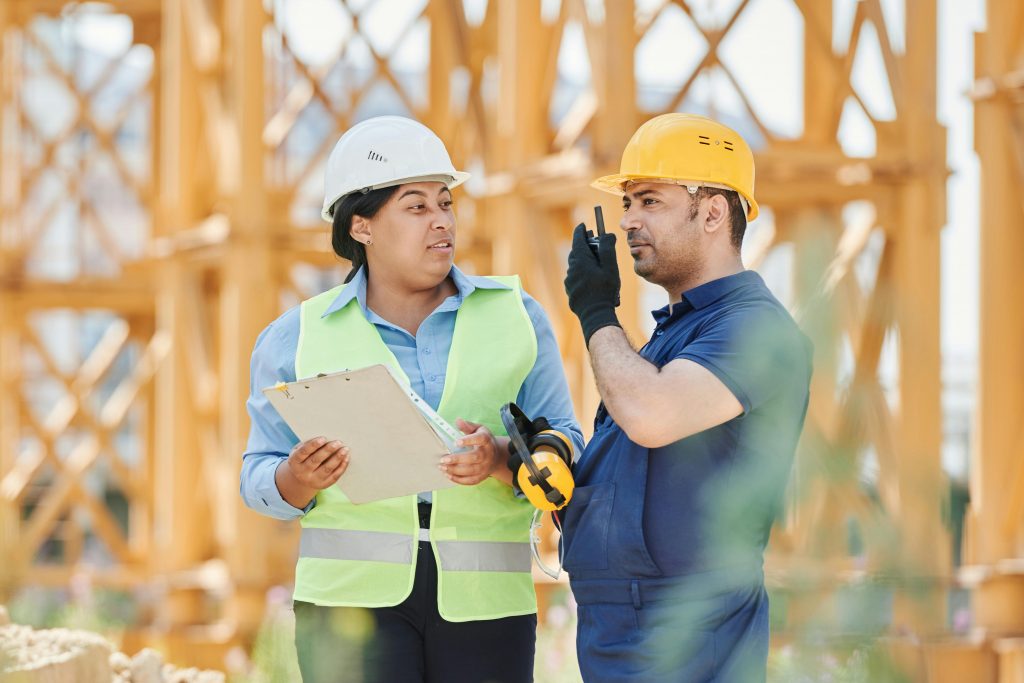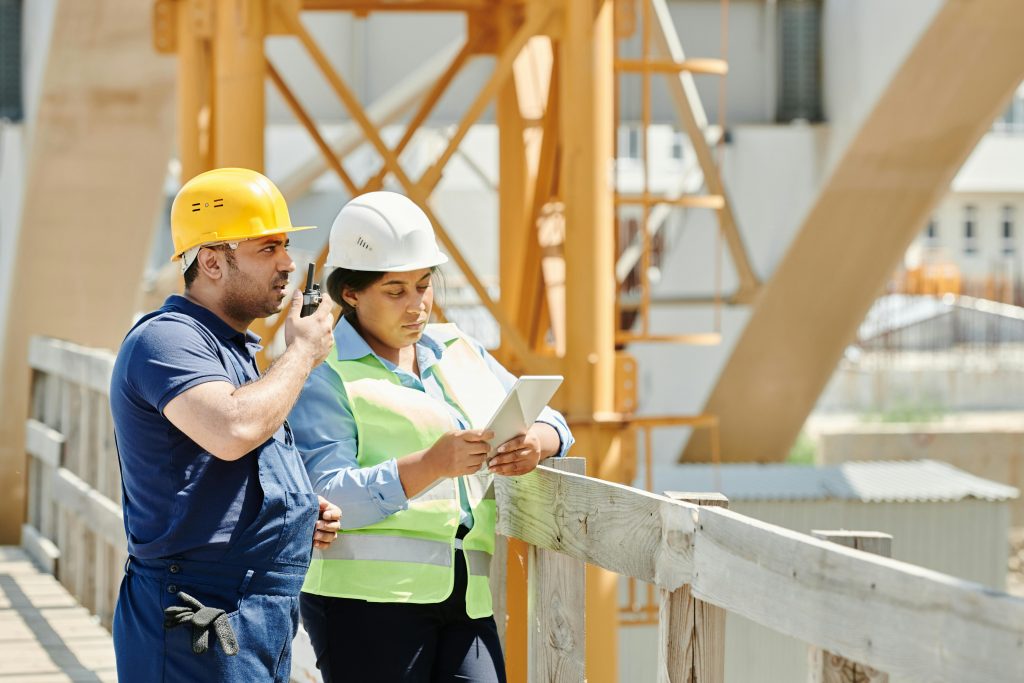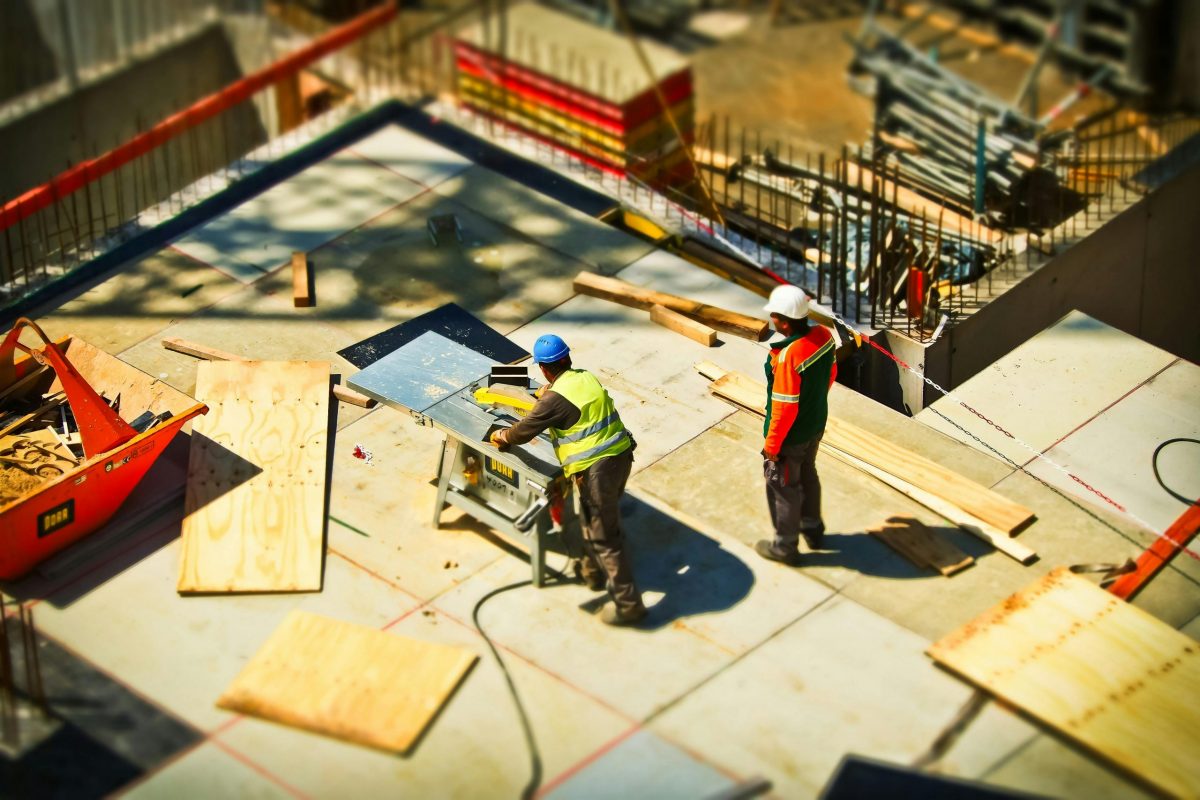- Regular safety training and tailored programs are crucial for minimizing workplace injuries on construction sites.
- Implementing and enforcing strict safety protocols, alongside clear communication, builds a culture of safety and compliance.
- Leveraging technology, like wearable devices and drones, for safety monitoring enables quick response to emergencies.
- Promoting open dialogue on safety issues and recognizing safe behaviors fosters a proactive safety culture.
- Continuous investment in safety improvements and updating the latest technologies enhance onsite safety measures.
Safety should always be the top priority on any construction site. It protects workers’ well-being and ensures that projects are completed efficiently and without unnecessary delays. By implementing proactive measures to enhance construction site safety, business owners and entrepreneurs can create a secure work environment that promotes productivity and minimizes risks.
This blog post will discuss key strategies for improving safety on construction sites.
Conduct Regular Safety Training

One of the most effective ways to enhance construction site safety is by providing regular safety training sessions for all workers. These sessions should cover proper equipment usage, hazard identification, emergency procedures, and best practices for preventing accidents. By ensuring that all workers are well-trained in safety protocols, business owners can significantly reduce the risk of workplace injuries.
Ongoing Process
Regular safety training should be seen as something other than a one-time event and an ongoing process. It’s crucial to keep safety knowledge fresh in workers’ minds and update training materials to reflect any changes in safety regulations or practices. Incorporating interactive elements such as simulations, group discussions, and hands-on demonstrations can significantly enhance the effectiveness of these sessions.
Specific Risks
Furthermore, tailoring the training to address the specific risks associated with particular job roles or projects can ensure that each worker is equipped with the knowledge and skills necessary to safely perform their duties. Regular assessments and feedback sessions can help identify areas for improvement, ensuring that safety training programs evolve and remain relevant.
Implement Strict Safety Protocols
In addition to providing training, it is essential to establish and enforce strict safety protocols on construction sites. This includes conducting regular inspections to identify potential hazards, implementing safety procedures for working at heights or with heavy machinery, and enforcing the use of personal protective equipment at all times. By creating a culture of safety where rules are consistently followed and enforced, business owners can minimize the likelihood of accidents.
Clear Communication is Key
Clear and effective communication is fundamental when implementing strict safety protocols on construction sites. Employers should ensure that all safety procedures and updates are communicated to every workforce member in a timely and understandable manner. Visual aids like signs, posters, and color-coded systems can help reinforce safety messages and guidelines, making them more accessible and easier to remember for all workers, including those for whom English may not be their first language. Additionally, promoting an open-door policy where workers feel comfortable reporting unsafe conditions or behavior without fear of retribution can significantly enhance the effectiveness of safety protocols.
Utilize Technology for Safety Monitoring

Technology enhances construction site safety. Business owners can leverage wearable devices with GPS tracking capabilities, drones for aerial surveillance, and digital platforms for real-time worker communication. These technologies help monitor safety compliance and enable quick responses to emergencies or incidents onsite.
Work with Professionals
It is essential to work with professionals when implementing technology for safety monitoring. Consulting with experts in the field can help identify the most suitable tools and techniques for a particular construction site and provide training to ensure proper usage. For instance, you should work with a company using reliable pre-in-line inspection tools. This will ensure your workers have the right tools to identify and address potential hazards before they become major safety concerns.
Promote Open Communication
Effective communication is key to maintaining a safe work environment on construction sites. Business owners should encourage an open dialogue between workers, supervisors, and management regarding safety concerns or issues. By fostering a culture where employees feel comfortable raising concerns and offering feedback, business owners can address potential risks proactively before they escalate into serious incidents.
Recognize and Reward Workers
Encouraging an atmosphere of open communication also involves recognizing and rewarding workers for their commitment to safety. Acknowledging those who adhere to safety protocols and contribute to the safety culture can motivate others to follow suit. Furthermore, regular safety meetings should be held to discuss new safety measures and immediate concerns and brainstorm solutions to ongoing safety challenges. These meetings can serve as a platform for everyone on site to share their insights and experiences, fostering a collective responsibility toward maintaining a safe work environment.
Invest in Ongoing Safety Improvement
Safety should be viewed as an ongoing process rather than a one-time initiative. Business owners should regularly evaluate their safety programs, solicit feedback from workers on ways to improve safety practices, and invest in continuous training and education opportunities for all employees. By prioritizing ongoing safety improvement efforts, business owners can create a work environment that is constantly evolving to meet the changing demands of construction projects.
Safety Technologies
Investing in ongoing safety improvement also means staying abreast of the latest safety technologies and practices. Innovations in construction safety, such as advanced wearables that monitor workers’ health signs, augmented reality for safety training, and AI-driven platforms for risk assessment, can significantly enhance safety measures on a construction site.
Enhancing construction site safety requires a proactive approach involving regular training, strict protocols, enforcement technology utilization, open communication channels, and ongoing improvement efforts to create a secure work environment where accidents are minimized, and productivity thrives. Implementing these proactive measures will protect workers’ well-being and contribute to the overall success of construction projects.





